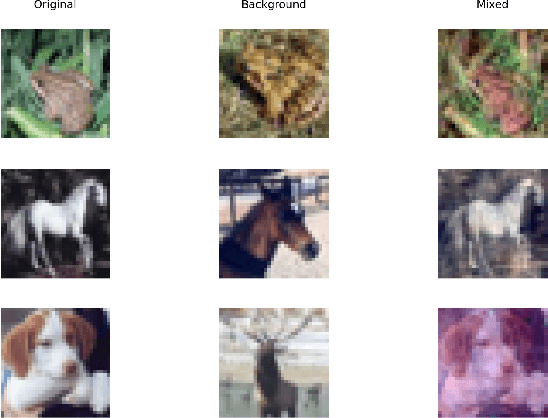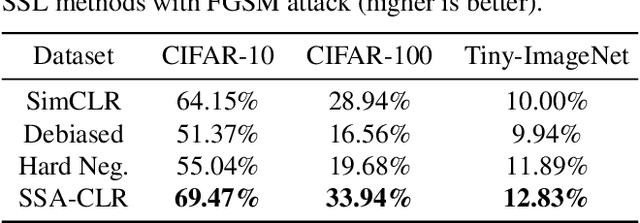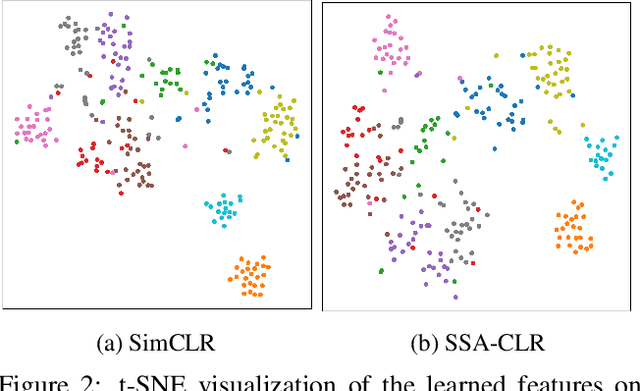Sharpness & Shift-Aware Self-Supervised Learning
Paper and Code
May 17, 2023



Self-supervised learning aims to extract meaningful features from unlabeled data for further downstream tasks. In this paper, we consider classification as a downstream task in phase 2 and develop rigorous theories to realize the factors that implicitly influence the general loss of this classification task. Our theories signify that sharpness-aware feature extractors benefit the classification task in phase 2 and the existing data shift between the ideal (i.e., the ideal one used in theory development) and practical (i.e., the practical one used in implementation) distributions to generate positive pairs also remarkably affects this classification task. Further harvesting these theoretical findings, we propose to minimize the sharpness of the feature extractor and a new Fourier-based data augmentation technique to relieve the data shift in the distributions generating positive pairs, reaching Sharpness & Shift-Aware Contrastive Learning (SSA-CLR). We conduct extensive experiments to verify our theoretical findings and demonstrate that sharpness & shift-aware contrastive learning can remarkably boost the performance as well as obtaining more robust extracted features compared with the baselines.
 Add to Chrome
Add to Chrome Add to Firefox
Add to Firefox Add to Edge
Add to Edge